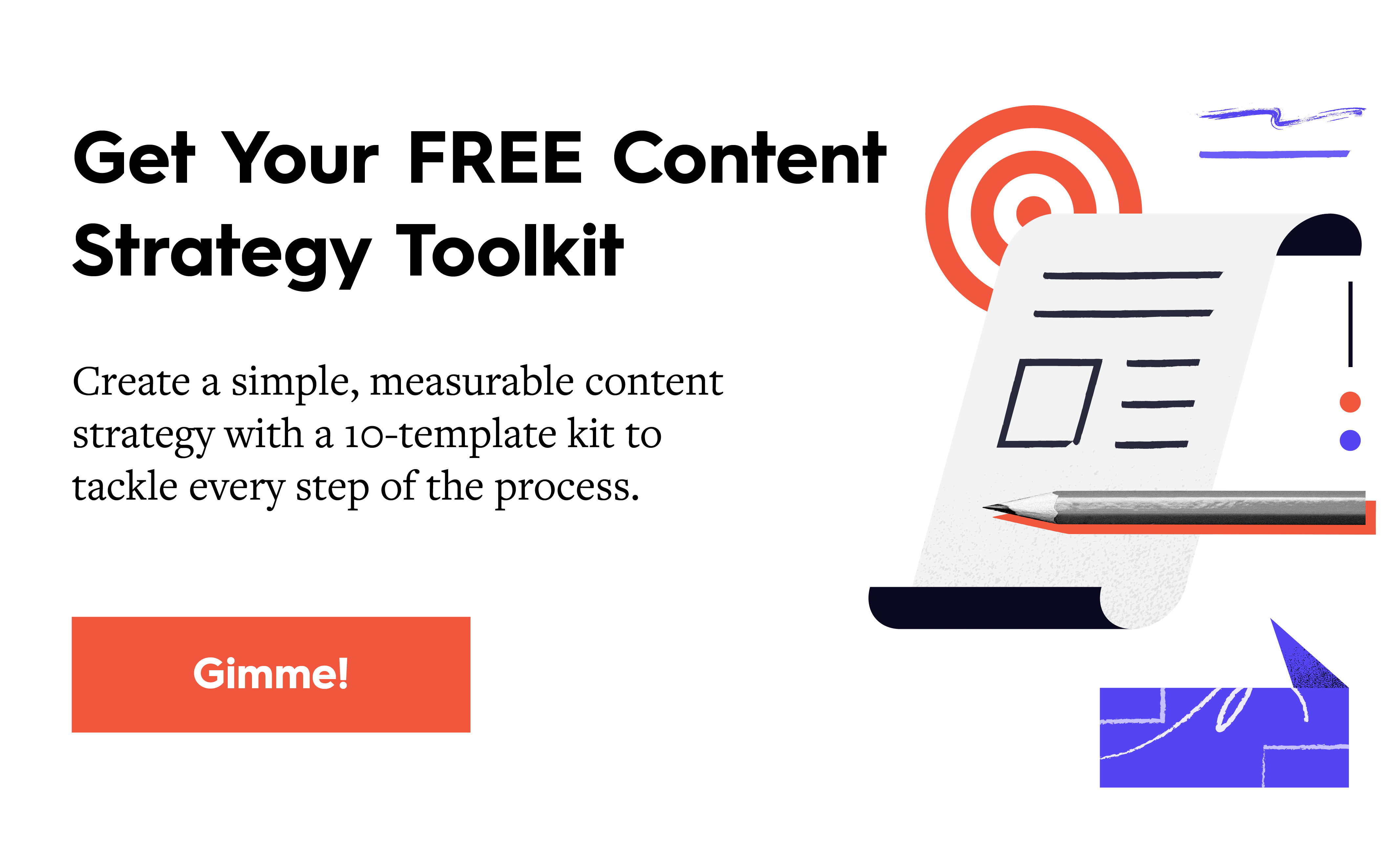As the founder of a content marketing agency with more than a decade in the game, I’ve worked with a lot of brands. But too often I’ve found that their understanding of “content marketing” is shortsighted.
They often reach out to us for an infographic for their blog or a video for their landing page because they want a single piece of content to drive more sales. They’re not thinking about their larger content strategy, or how that strategy supports their brand’s larger goals. They’re hyperfocused on the piece of content they want, convinced that it will be the one and only thing they need to increase sales.
When we kick off an engagement that starts with this sales focus, I encourage our partners to take a breath, step back, and consider the bigger picture. Marketing isn’t sales, and sales isn’t marketing. When you try to do both in the same piece of content, you dilute your message (at best) and turn people off (at worst).
In content, you have to choose one or the other: Market your stories, or you sell your products. You can’t do both.
Marketing plays a powerful role in the buyer journey, but it can only be successful if it’s used the right way, for the right things. Unfortunately, the lines between marketing and sales can be blurry, so I thought we’d take the opportunity to break down the difference between sales and marketing content to help you understand the unique role each plays in the buyer journey—and make sure you’re making the right content for each.

What Is Marketing Content?
One word: charm. Marketing content is about charming people. Marketing helps you introduce yourself to the world, show them who you are, engage with them about things they’re interested in, and build a relationship from there. When you do content marketing well, you naturally attract people to whatever you’re selling and the kind of company you’re building.
Think of marketing as starting the conversation to help you and your audience get to know each other. It’s not rattling off a list of your products and services, flooding them with information, and screaming at them to BUY NOW! The content people actually love to share—and the content that publications like to publish—is not the content that says how great you are. Rather, it’s the content that speaks to your customer’s pain points, educates, or inspires them. In short, it’s content that speaks to your audience’s interests, not yours.
Ultimately, people want to buy from brands they know, like, and trust. If you’re selling to them off the bat, they will be immediately turned off. Thus, your marketing content should speak to their needs, interests, wants, and desires. Charm them from the start, and if you do it well, convincing them to buy (when it comes time for those sales conversations) will be much easier.
Note: When we talk about marketing, it’s not only customers who you’re marketing to. Potential employees are also interested in who you are, what you believe, and how you treat employees, so marketing your employer brand should also be a consideration.
What Is Sales Content?
One word: convince. Sales content is about convincing people that you’re the best brand to work with, your products and services are right for your buyer, and your people are a good fit.
If you’ve done marketing well, people will be eager to continue the conversations you’ve started. They will even take the next step to learn more about what you do—whether that’s looking up your services, comparing products, or reaching out directly.
Marketing = Charm your audience.
Sales = Convince them to buy.
Sales content is your opportunity to reinforce the trust and credibility you’ve hopefully cultivated at this point via marketing. Whether your sales content is testimonials, case studies, impressive stats, awards, etc., it should prove why you are the right brand for them.
How to Balance Sales and Marketing Content
To recap, marketing content is about sharing your brand story, your vision, and your perspective to engage with your audience in meaningful ways. It should show who you are and showcase your uniqueness without you having to say it. Sales content is about selling people your products or services. It should communicate why people should ultimately give you, not your competitors, their business.
The most important thing to remember is that the relationship between marketing and sales content hinges on getting the sequencing right. Market when your audience is in the marketing stages of their journey, and sell when they’re ready to be sold to. But how do you do that?
1) Map your buyer journey.
The goal is always to create a delightful buying experience from start to finish—not to abruptly switch gears. To do this well, you need a clear understanding of your buyer journey, and you need to know what to say at each stage to effortlessly move your audience down the path to purchase.
Ideally, your marketing will engage with and attract potential customers who have an interest in working with you. Then, sales can become a natural, organic progression of that interest.
Tip: Use our free template and guide to map your buyer journey and ensure you’re saying the right thing at the right time. (BTW, if you don’t have marketing personas, see our guide to make them ASAP.)
2) Know your brand messaging.
Whether you’re creating marketing content or sales content, you want to tell a consistent, cohesive story across all channels. From your Twitter, to your blog articles, to your sales deck, your core content should be aligned and consistent. Thus, you need established brand messaging. This doesn’t mean you have to use identical copy on every single platform; it means you understand your tagline, value prop, and key selling points—and can communicate them effectively throughout the buyer journey.
Tip: If you haven’t nailed down your messaging, use our free template and framework to articulate it and ensure everyone on your team is empowered to share it.
3) Create marketing content that provides value.
Again, focus on charming your audience through content that provides value to them in some way. Whether it’s an interesting thinkpiece, a tutorial, or even a piece of entertainment, you want people to feel like their time spent with your brand (via content) is worthwhile. (This is why creating marketing personas and vetting your ideas through them is so important.)
68% of B2B marketers prioritize the audience’s informational needs over your organization’s sales/promotional message.
—Content Marketing Institute’s 2022 B2B Content Marketing Report
Tip: Find out how to use empathy to create content marketing that resonates, brainstorm interesting content ideas, and create meaningful content.
4) Create the sales content your audience wants.
If your marketing content is strong and does a good job of charming would-be customers, your sales content doesn’t need to be forceful or self-aggrandizing. With simple confidence, you should provide the information your audience needs and wants—and deliver it the way they want.
For example, your product or service may help different audiences in different ways. Think of how sales content may need to be tailored for each group. And think about how you can communicate the information they need in the most effective form possible.
For example, do they want to read a long brochure or would a 30-second explainer video on your website help them make their decision more effectively?
Remember: No matter how good your sales content is, if you aren’t taking the time to truly connect with your audience in the early marketing stages, you won’t be able to convince them to support you.
Note: When it comes to selling to your existing customers, you have more freedom to send sales and marketing content in tandem their way. Since you’ve already gone through the effort of charming and convincing them, you’re not starting at square one. But I would caution against constantly hitting them up to buy more from you. Instead, focus on creating marketing content that reminds them why they were drawn to you in the first place.
Tip: Find out how to create sales content that empowers your team.
5) Get sales and marketing talking.
Creating a seamless content experience across the buyer journey is one of the biggest challenges that brands face, especially when marketing and sales are siloed. (This is a problem we’ve seen in so many organizations, including our own.)
Tip: To get your team on the same page and improve the content you create all around, find out how to make content to bridge sales and marketing, follow our tips to create great campaigns for every stage of the journey, and find out how to optimize your content creation process.
Stay Open and Keep Experimenting
Ultimately, the reality is there’s no silver bullet in marketing; it’s all about playing the slow game, especially in B2B. One piece of sales or marketing content may not be the magic answer, but if you can create a content strategy that is cohesive, expansive, and tailored to your audience, you can effectively increase your leads and sales quarter by quarter.
That said, we know there are plenty of factors that can affect your ability to create content, from budget issues to bandwidth. If you need some extra support to help your team create more effective content marketing, find out what you should look for in a content agency, or find out what it’s like to work with us.





